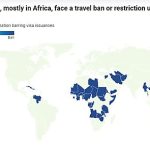
Jeremy Horpedahl
The American Farm Bureau Federation, or Farm Bureau, recently released their annual tradition for Thanksgiving: a report on the cost of a typical Thanksgiving dinner in the United States. For 2025, the Farm Bureau tells us, you can make a traditional meal of turkey, sweet potatoes, cranberries, pumpkin pie, and other sides for a group of 10 for about $55. Not only is that much lower in nominal terms than last year, looking at past Farm Bureau reports, it is actually a lower sticker price than the past four years in the United States—it had been as high as $64 in 2022.
Careful readers will note that nominal prices aren’t the best comparisons when looking at past years. Not only have prices in the economy generally increased—so it may be somewhat surprising that Thanksgiving prices have mostly fallen—but of course nominal wages have also increased a lot over the past four to five years.
To account for both falling dinner prices and rising wages, it is useful to compare the cost of this dinner to measures of earnings. One good measure is the median weekly earnings for full-time workers in the United States. Unfortunately, as with a lot of federal data from the Bureau of Labor Statistics, we don’t have the most recent number at the moment due to the federal government shutdown. However, using the available data, we can estimate that median weekly earnings were about $1,264 in the third quarter of 2025, which compares with $1,166 last year and just $1,002 back in 2021. (I use the third quarter, because in most years, that is the most recent data we have available, even though we are now in the fourth quarter.)
Putting together the Thanksgiving dinner cost from the Farm Bureau and median weekly earnings back to 1986, we see perhaps a shocking trend for many weary grocery shoppers: 2025 is the most affordable year for the median worker to buy Thanksgiving dinner. It is much more affordable than in the past three years, and it even slightly beats 2020—that very weird year in our lives and for economic data, which had held the previous affordability record. Gale Pooley performs a similar analysis at Human Progress using a different measure of income (blue-collar worker wages) and finds a similar trend with 2025’s Thanksgiving meal requiring the fewest hours of work to purchase it.
Where can you find this mythical $55 dinner? If you think that doesn’t sound quite right, it may be due to where you live. The Farm Bureau reports that in the Northeast and West regions, the meal was over $60, while the South region was the cheapest at $50. Regardless of where you live, have no fear, the free market is working hard to deliver you an affordable meal. Thanks to our competitive grocery store market, retailers across the country are putting together meal plans for you, allowing you to feed your family for somewhere in the range of $4–$5 per person—very similar to the Farm Bureau survey (which is about $5.50 per person).
But the good news of increasing affordability does have some hidden downsides, and perhaps we should be hoping for even more affordability in the future. While the Farm Bureau survey doesn’t go so far as to blame public policy for some of the items that did increase in price, it seems that this could be the case.
For example, the survey notes that many fresh/produce items have risen quite significantly (e.g., a veggie tray is up 61 percent, and sweet potatoes are up 37 percent). Fresh produce is described as “highly volatile” and sensitive to “weather, labor shortages, transportation delays,or regional production setbacks.” Labor is explicitly flagged: “The continued shortage of farmworkers and rapidly increasing farm wages also played a role in rising produce costs.” Almost certainly some of that labor shortage is due to the crackdown on both legal and illegal immigration: Around 70 percent of farm laborers are immigrants in the United States.
It’s not just immigration restrictions that could be increasing the cost of fresh produce items on your Thanksgiving table. A large and increasing share of our fresh food is imported today, as Scott Lincicome documented in his essay on food globalization. Fresh produce (as well as the fertilizers involved in growing) has long been subject to protectionism in the United States, even before Trump’s 2025 tariff increases. We can be somewhat thankful for the recent reprieve granted to some food products (even though the savings probably won’t hit store shelves by Thanksgiving this year).
The Farm Bureau also notes that a reason the Thanksgiving meal isn’t even more affordable is because many farms are hurting due to “historically low crop prices, high supply costs, and trade uncertainty.” While the level of trade restrictions imposed by the Trump administration are historically unprecedented, many businesses, including farms, seem more concerned about the uncertainty of trade policy, with rates and exemptions constantly changing (due to negotiations, court rulings, and pure whim in some cases).
Thanksgiving is the perfect time to be grateful for the abundance that free markets and globalization provide us. Much of the food we consume is clearly a result of these all-American policies. But at the same time, it is worth reflecting on how much better things could be with more consumer-friendly trade policies and labor-friendly immigration policies.








